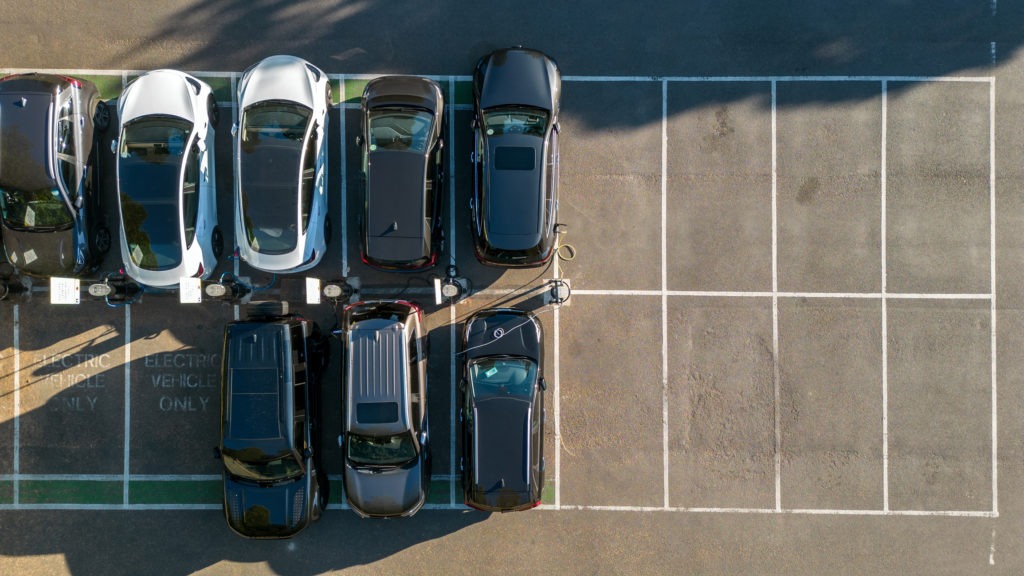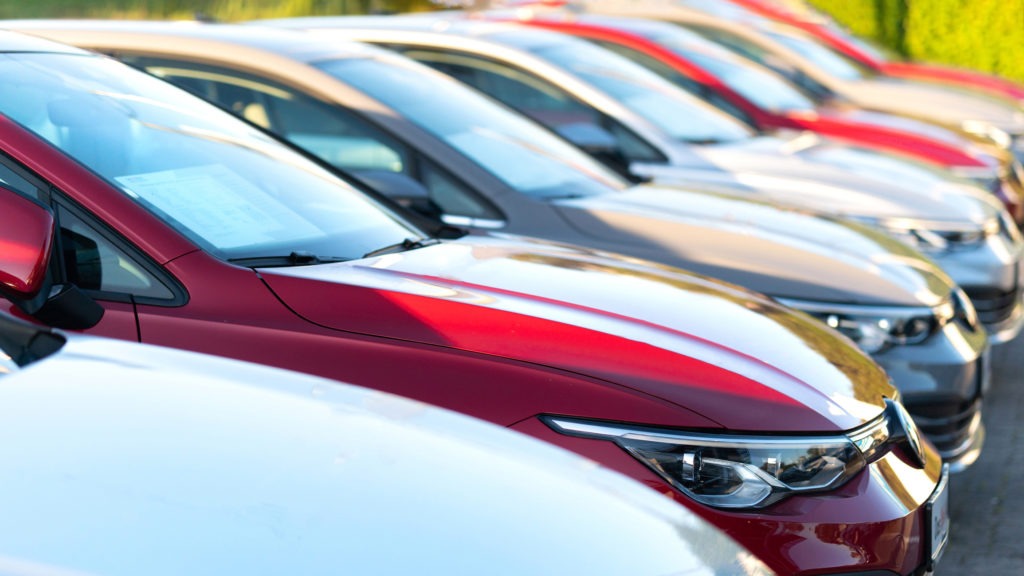Used-car market conditions present cross-border remarketing opportunities
22 September 2022

Resilient demand for used cars has created greater opportunities for cross-border remarketing. But there are challenges to overcome, explains Autovista24 senior data journalist Neil King.
The large consumer-to-consumer element of the used-car market, without reliance on physical dealers, means used-car sales fared far better during the COVID-19 pandemic than new-car registrations.
The first wave of the pandemic stopped sales activities at dealerships that were not digital. The less pronounced downturns in subsequent lockdowns exemplify how the establishment, and increased consumer acceptance, of online purchasing has also significantly improved the opportunities for cross-border remarketing.
New-car supply issues have compounded this, with markets such as Spain increasingly relying on imported used cars to meet demand. This phenomenon has also maintained residual values (RVs) in exporting countries such as Poland.
‘There used to be huge imports of used cars from Western Europe into Poland, at the level of about one million units every year. Now it is much more limited, and I can see the opposite trend of exporting the youngest used passenger cars from Poland. This is based on relatively lower market values and the exchange rate, which is approximately 7% higher than before COVID-19,’ commented Marcin Kardas, head of valuations, Eurotax Poland (part of Autovista Group).
Used-car activity has retreated this year and will be affected by the cost-of-living crisis. However, in conjunction with ongoing new-car supply issues, the squeeze on household budgets also means many consumers will invariably turn to more affordable used cars.
Autovista Group’s base case for 2023 anticipates continued supply-chain issues, very low economic growth paired with high uncertainty, and inflation above target zones. This will keep new- and used-car demand under pressure, but new-car registrations should rise compared to 2022. Used-car markets are expected to be stimulated accordingly, as more cars will be supplied.
This does not mean 2023 will be a rebound year for the automotive industry, but cross-border remarketing opportunities remain. The trend towards standardisation of trim-line names and equipment across European market will facilitate the practice too – not only for existing online used-car retailers, but also for dealer groups and even carmakers themselves.
Online used-car retailers
As the internet has become a more acceptable platform for buying used cars quicker than may have been anticipated, this has given rise to several independent online retailers such as Auto1 Group, Cazoo, and Driverama.
In April 2021, Driverama announced its launch as Europe’s first borderless online used-car retailer, pointing to the pandemic as an accelerant that drove people towards online retailing more quickly. The company also noted forecasts stating that by 2030, 20% of all cars bought in Europe will be transacted online.
‘Cross-border remarketing may still be marginal but is growing with the expanse of the internet and English being spoken more widely by the latest generation, which is also less afraid of going abroad to buy a car,’ explained Ludovic Percier, RV and market analyst, Autovista Group France.
‘For example, there is a website in France, Leparking.fr, which collects all used-car adverts across websites worldwide to help you find the right car. You can select the countries you are interested in or even the distance from your location. For people living in the centre of western Europe, this can lead them to many foreign countries, sometimes closer than the other end of their own country. The key factors in going abroad are a lower price, more choice, and sometimes proximity.’
Aside from individual buyers travelling to source a car, the ongoing supply shortages, and increased consumer willingness to purchase online, create significant opportunities for market players when it comes to cross-border remarketing. However, not all consumers are prepared to travel internationally and deal with the bureaucracy involved, so a local presence is required. But this requires scale, which is the core reason Cazoo cites for its withdrawal from the mainland European market.
‘Following a review of a range of strategic options, management has concluded that the right course of action is for Cazoo to now focus exclusively on its core opportunity in the UK, an enormous addressable market with approximately eight million used-car transactions and a value of over £100 billion annually,’ Cazoo announced on 8 September.
‘The plan to withdraw from the EU is based on the material further investment that would be required for Cazoo to continue to scale its operations in the EU and the conflict this has with the company’s priorities of cash conservation and achieving profitability without the need for additional capital. As a result, the company intends to commence an orderly wind down of its operations in Germany and Spain and is in consultation with its employee representatives in France and Italy.’
Another key challenge for online used-car retailers is sourcing cars, especially as they scale operations and enter new markets. One solution is to establish relationships to gain access to de-fleeted vehicles.
In February for example, Auto1 Group, one of Europe’s largest online retailers for buying and selling used cars, struck a deal with Munich-based Allane Mobility – formerly known as Sixt Leasing – to secure supply of around 10,000 leased-car returns and fleet vehicles per year.
Standardisation of equipment and trim-line names
Scale is less of an issue for established large dealer groups and carmakers’ own dealer networks. They may be hampered by borders, but this does not mean that cars cannot be sourced elsewhere. One key challenge, however, is the inconsistent naming conventions of trimlines and/or standard equipment.
‘The Volkswagen trim line Carat in France for example means nothing in Germany, Specifications may differ, but consistent version names at least add clarity,’ commented Andreas Geilenbruegge, head of valuations and insights at Schwacke (part of Autovista Group).
This inconsistency in both trim-line names and standard equipment has not passed carmakers by, with Geilenbruegge pointing to heated seats as an example. They are not essential equipment in new cars in southern European markets such as Spain, but their absence limits a car’s remarketing opportunity in northern Europe. Carmakers are therefore looking at measures such as introducing seat heaters as standard equipment across Europe from the second trim line upwards.
This may not entirely remove international prejudice, whereby cars registered new in one country are often valued lower than those registered domestically.
‘A car bought new in Germany and driven its whole life in France is not worth the same to a dealer as the same car with the same specifications registered new in France. So, consumers risk losing money when trading in cars imported to France compared to a car bought new in the country,’ Percier commented.
Conversely, consumers may be unwilling to pay the same amount for an imported used car as one that has only been registered in their home country.
One manufacturer that has swerved inconsistent trim-line names and specifications – and seemingly international prejudice too – is Tesla. This has facilitated the widely reported exporting of used models from Germany to Norway for example.
‘We are heading towards a future universal European market and some carmakers, such as Tesla, are already uniformising their offer to sell cars wherever the demand is high and the offer low. Most people will still buy a car in their own country, so brands must adapt to providing cars where they are needed. This is true for the European market but also in the local market, between areas and cities,’ said Percier.
Carmakers as used-car agents?
Looking ahead, Percier noted that features on demand (FOD) may eradicate the differences in standard equipment across markets. ‘With the coming FOD in cars, everybody will be capable of activating any option on the car, even after five years. The only differences will be the engine, gearbox, and the car’s aesthetics – that is it.’
With consistent trim lines and equipment, there is greater scope for carmakers to enter the realm of cross-border remarketing themselves. One approach could be an agency model, whereby carmakers can actively offer to purchase cars from a dealer when there is higher demand in another country. This also works passively, however, with dealers able to identify cars that are available for sale across the carmakers’ European dealer network. They can then source them, with the carmaker assuming responsibility for the paperwork, financial transaction, and logistical arrangements.
Whatever the future holds, cross-border remarketing is here to stay and will only gain momentum as transparency increases, both in terms of standardised equipment and names, as well as online presence.



